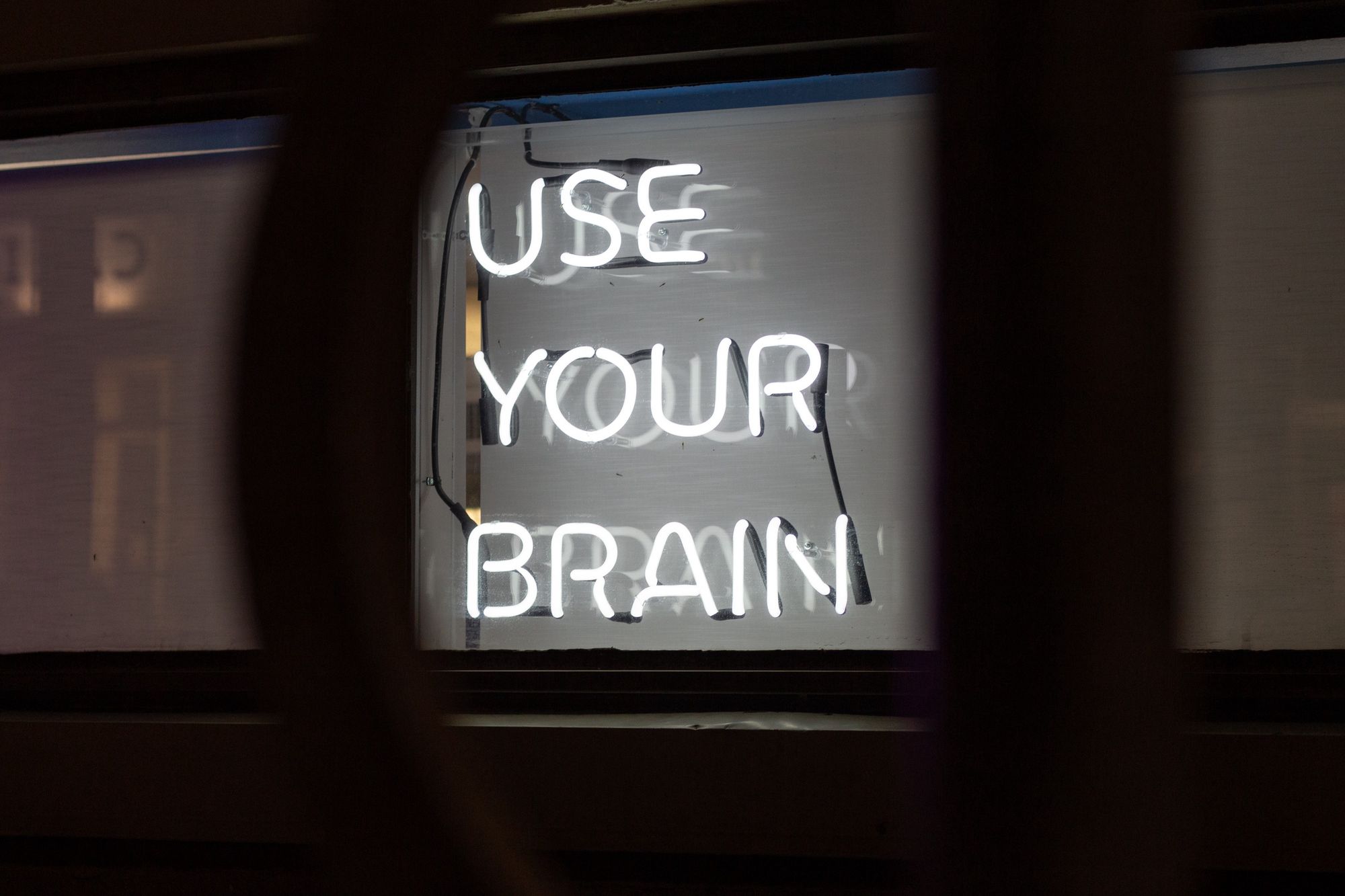Understand These Two Neuroscience Concepts To Build Stronger Habits
“You’ve got to treat your brain like a dog you just got.”

When you read books like Atomic Habits, The Happiness Advantage or Deep Work — you’ll notice that when it comes to building a new habit, they all advise a variation of the following:
- Focus on one new habit at a time
- Start small
- Avoid multi-tasking
- Prioritise repetition over perfection
That all sounds sensible, yet it’s not how most of us approach new skills or habits.
I can’t tell you the number of times I’ve created a detailed running schedule for myself, doing hours of online research about stretching, nutrition, the best running gear — only to quit two weeks later.
As James Clear, author of Atomic Habits, says:
It is so easy to overestimate the importance of one defining moment and underestimate the value of making small improvements on a daily basis. Too often, we convince ourselves that massive success requires massive action.
We’ve decided on learning or doing something new, and we’re feeling excited. It’s all-or-nothing. Quit all alcohol immediately. Go to the gym four times per week. Write every evening for two hours. We start with high expectations, but the initial excitement is gone after a few days or weeks. Feeling like we’re not progressing quickly enough or unable to combine the intense schedule with regular life, we quickly slide back into our previous routines.
Does any of the above sound familiar?
It Starts With Being Curious About How Your Brain Works
Deep down, I knew what I was doing, yet I would fall into the same trap every time. I was like the proverbial insane person doing the same thing over and over again and expecting different results (a quote wrongly attributed to Einstein —fun fact).
I felt like I was not disciplined or determined enough — someone who could not stick with things.
My mindset completely changed when I started reading books like the ones I mentioned at the start of this article.
Picking one skill and starting very small, and being okay with not seeing results for a long time, is difficult to do for most of us. We’re used to getting what we want quickly.
Learning about habits and the neurological process behind habit building made me realise that it is not a matter of weakness or discipline. Instead, I was approaching things in the wrong way, working against my brain versus working with it.
Understanding why it is so important to start small and why repetition matters were crucial to changing my mindset and approach.
The answers can be found in two neuroscience concepts that form the foundation of strong habit building: neuroplasticity and myelination.
Your Brain Can Change, Adapt and Grow
“I’m not good at maths.”
“I’m not a creative person.”
Somewhere along the way, I had picked up these labels that I used to define what I could and could not do, which skills I should or should not try.
Reading The Happiness Advantage by Shawn Achor and learning about neuroplasticity made me see how incredibly self-sabotaging and wrong these labels are.
We can literally rewire our brains.
Neurological research has shown that consistently repeating an action leads to clear physical changes in the brain.
That is the essence of the incredible breakthrough of neuroplasticity: your brain isn’t fixed. It can change, adapt and grow — regardless of your age or genetics.
In Shawn’s words:
The question is not if, but how much change is possible.
So how does it work on a neurological level? Simply put:
Within our brains are billions upon billions of neurons, interconnected to form a complex set of neural pathways. Every time we perform an action, electrical currents travel down these pathways, from neuron to neuron, delivering the relevant messages.
The more we perform that particular action, the stronger the connection between the neurons will become, making the message travel faster. That’s how an action, with enough repetition, becomes automatic.
Think of tying your shoelaces or riding a bike. The first time you tried this, you needed to concentrate, and the movements felt clumsy. Now, it comes naturally, and you can do it without thinking about it.
Not All Actions Are Created Equal
When you continuously repeat a specific habit, a biological process called myelination will start working.
Myelin is a layer of fatty tissue that grows around the neurons, acting like an insulator that allows the cells to fire faster and cleaner.
You get better at a skill as you develop more myelin around the relevant neurons and corresponding neural pathways, making the pathways fire more effortlessly and effectively.
There is a catch.
For myelination to be useful, the action needs to be:
- Small
- Specific
- Focused
- Repeated
Make it small
A new habit should be right on the edge of your current abilities — not too easy, not too difficult. In the book Atomic Habits, James Clear calls this The Goldilocks Rule.
Start small — ridiculously small. Two minutes of meditation. Ten minutes of writing. Five push-ups.
Build up from there.
By starting small, you increase the chances of sticking with it, even in the moments that you don’t feel like it. It might feel inconsequential or a waste of time, but it’s not. Think of the neural pathways in your brain. You’re slowly building the connections between those neurons.
Make it specific
Sticking with a new habit becomes especially difficult when the plan is vague. Decide in advance when, where, how often you are going to do something.
Two minutes of meditation every evening right before going to bed.
Ten minutes of writing first thing in the morning, immediately after making coffee.
Remove all decision-making around the new habit, so you don’t have a chance to talk yourself out of it.
Be deliberate and focused
Here’s why small and specific matters so much.
By focusing intensely on a small and specific action, you’re isolating the relevant neural pathway. As a result, you’re forcing that specific pathway to fire, again and again, in isolation.
This repetitive use of a specific pathway triggers cells called oligodendrocytes to begin wrapping layers of myelin around the neurons in the circuits — effectively cementing the skill.
That’s how you get optimal myelination.
Multi-tasking or switching between tasks quickly hinders the process. You might have been playing the piano for two hours, but if you kept picking up your phone and reading emails, you would have been better of playing for thirty minutes in deep focus.
Put the reps in
Last but not least is repetition.
The more you perform the same action, the thicker the myelin gets, the better it insulates our nerve fibres and, therefore, the faster our movements become.
A thick layer of myelin helps you retain and improve new knowledge and skills.
That’s why simply putting in the reps is one of the most critical steps to cement a new habit.
There’s no way around it.
Prioritise repetition over perfection. You don’t need to have the perfect plan from the beginning. You’ll figure things out and optimise the habit as you go along while strengthening the neural pathways and letting myelination do the work.
Next time you tell yourself that you’re not able to do something— think of neuroplasticity.
Whatever it is that you have set your mind to, it is possible.
Next time you are frustrated that you are not seeing results quickly enough— think of myelination.
Ensure you are approaching the new habit in a way that helps the myelination process. Start small. Make it specific. Be focused. Repeat. Repeat. Repeat.
Our brains are a wonderful thing, and the more we learn about them, the more we can use and train them to our advantage.
As comedian Jerry Seinfeld put it eloquently:
It’s like you’ve got to treat your brain like a dog you just got. The mind is infinite in wisdom. The brain is a stupid, little dog that is easily trained. Do not confuse the mind with the brain. The brain is so easy to master. You just have to confine it. You confine it. And it’s done through repetition and systematization.
If you enjoyed this, consider joining my mailing list where I share my thoughts, notes and recommendations on what I’m reading and learning about.
I’m at the very early stages of my interest in productivity 🤓 and metacognition 🧠, so if that’s your thing, definitely sign up to stay updated.
Thanks for reading!
